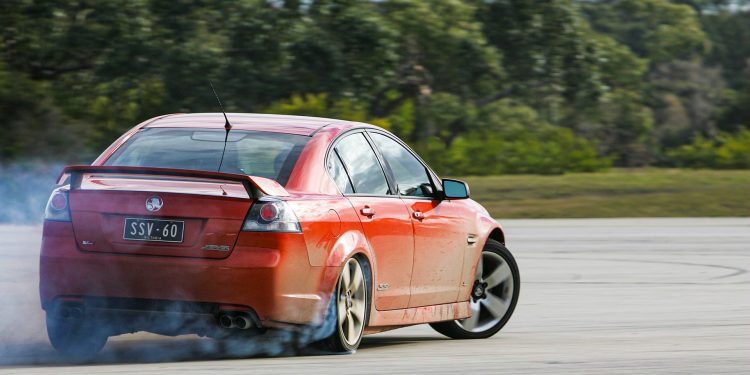2006 Holden Commodore VE SS first drive
Words: Bruce Newton | Photos: Tom Gasnier
How good is the new VE Commodore? After four days of intense briefings, the Australasian press corps is dying to find out. Is this the best Australian car ever?
Alright already. Enough bloody talk about fuel economy, the Holden-burg, and space-saver spare tyres: let’s just get in the new VE Commodore SS V, drive the damn thing, and establish whether it is actually any good. And by good we mean really good. If it’s the sort of car worth driving for the heck of it, for the fun of it, for the love of a rev and a corner. And for its ability to communicate it all cogently and engrossingly back to us punters.
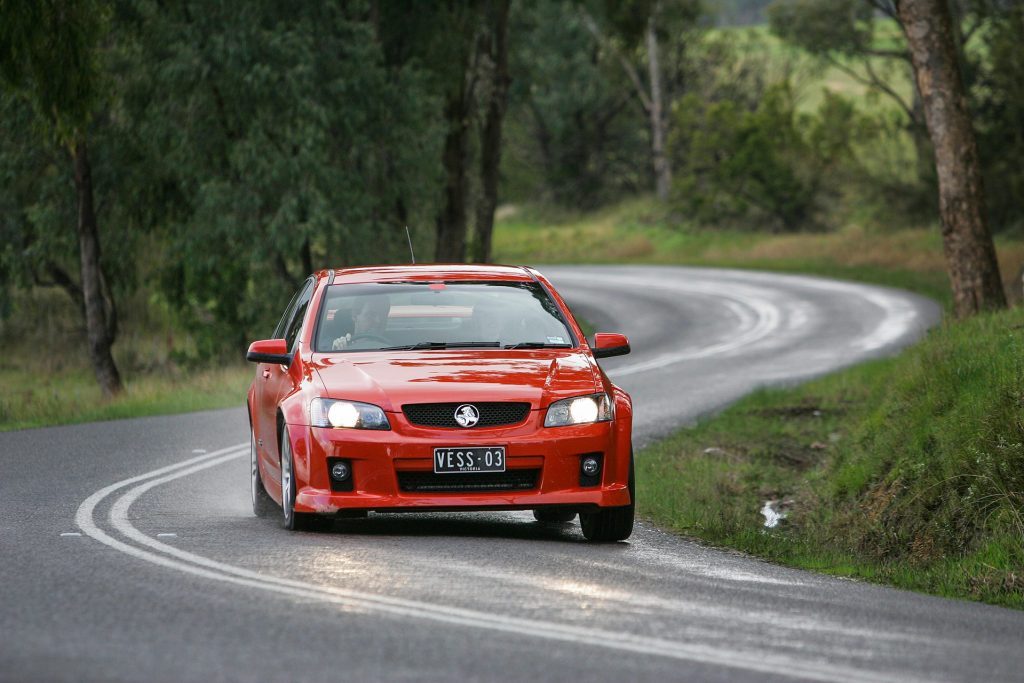
Well, I won’t keep you wondering. The SS V is good. In fact, it’s effin’ brilliant; inspiringly so, addictively so. Obviously, we haven’t driven it back to back against the immediate or even distant opposition, but it feels impressive enough to give the Ford Falcon XR8 a good spanking, and even outpoint the wonderful XR6 Turbo. This thing is an Aussie automotive legend – in the making.
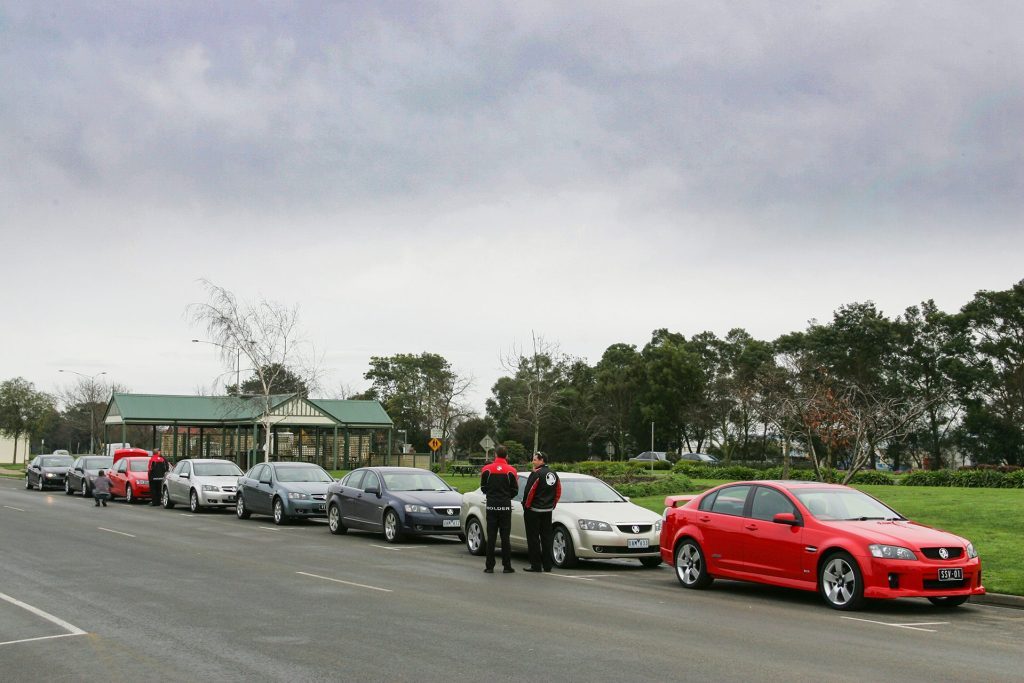
But it goes further. This is a car good enough to stand up to just about any affordable sports-sedan in the world – and a few not so affordable ones as well. Holden targeted BMW driving ability and has delivered. Phew! Big call, but then with $1.04billion spent on development, VE really does need to be an outstanding car, and SS V undoubtedly hits the nail squarely on the head. And two days driving on some great roads to the north-east and south-east of Melbourne also has provided substantial evidence the rest of the range isn’t too shabby either.
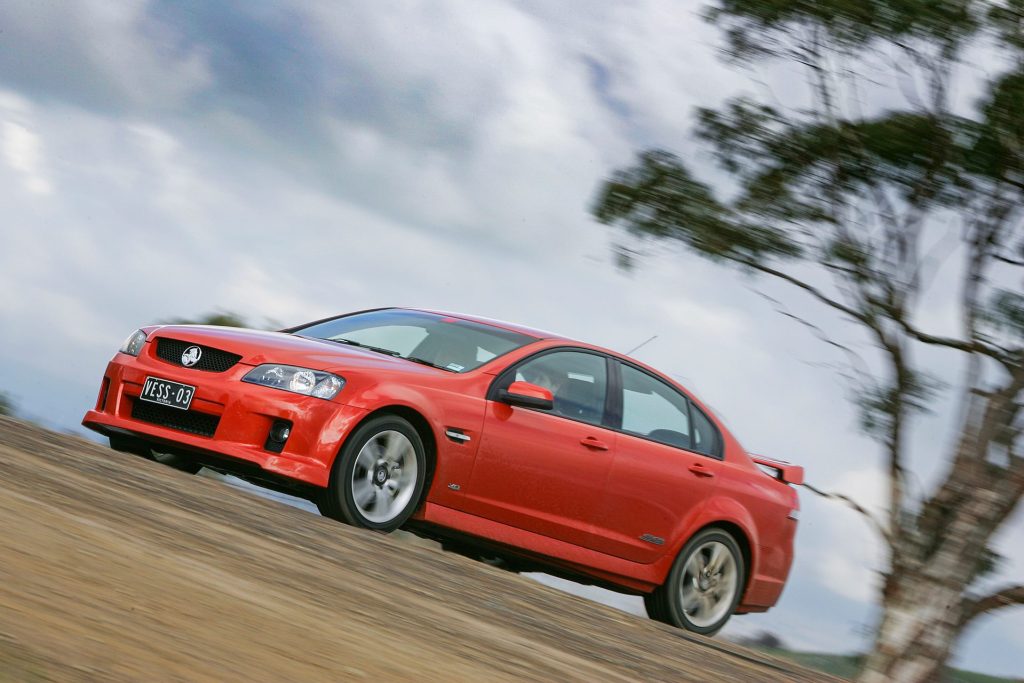
In fact, all the V8s, powered as they are by the latest L98 version of the Gen IV 6.0 litre (read that as a minor update of the L76 introduced in Australia last January), are great cars; it’s just that the SS V and its Calais V sports-luxury sister car seem to have that little something extra. In the case of the SS V, it’s an incremental improvement to balance, steering, and grip that specially-tuned 19-inch Bridgestone RE050A tyres deliver over the 18’s the SS and the rest of the V8 range employs. Sounds wanky, but the sports-tuned FE2 version of VE’s new ‘linear control’ suspension really is sensitive enough to communicate the change. For the Calais V, there’s exquisite styling inside and out that truly captures its position as the flagship of the range. Someone should package this thing up and send it to Lexus Styling Dept, care of Toyota Japan Inc. This is what the GS should look like.
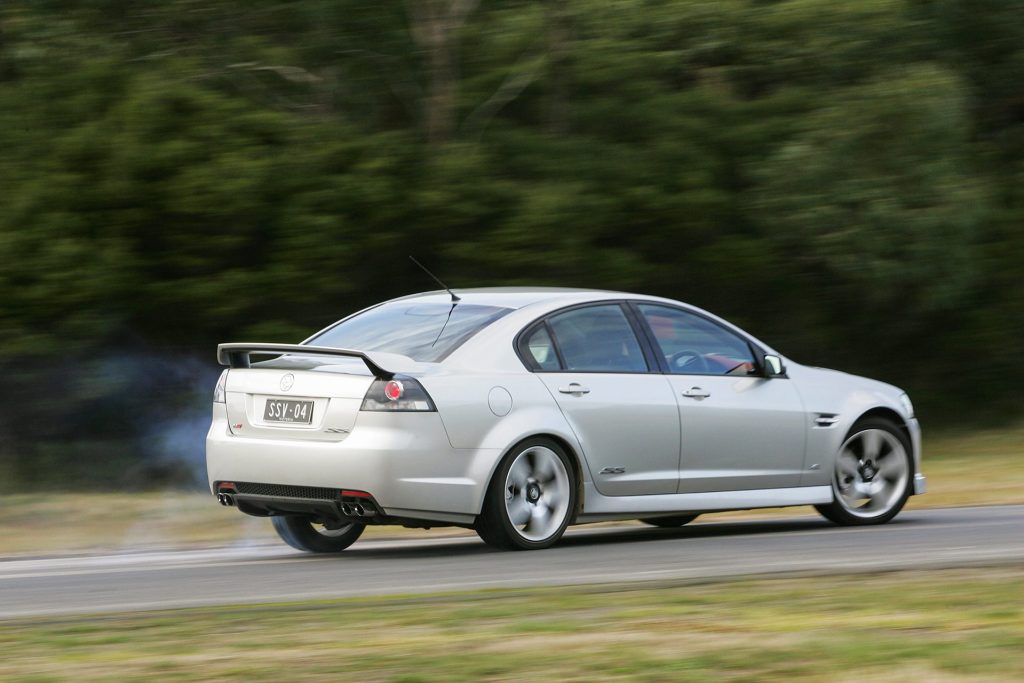
Not that the SS V is bad-looking. But the exterior explained, analysed, and featured in the last issue of New Zealand Autocar does look much more imposing in the clear Victorian winter light. More real. Its best angle is rear three-quarter, emphasising the way the car slopes forward from the lofty rear wing to those beefy front fenders. It took designer, Peter Hughes, 11 attempts to get their shape right, but from dead straight-on, it’s still debatable whether he succeeded. There’s just something about the way the sports body-kit sucks in its lower bumper…
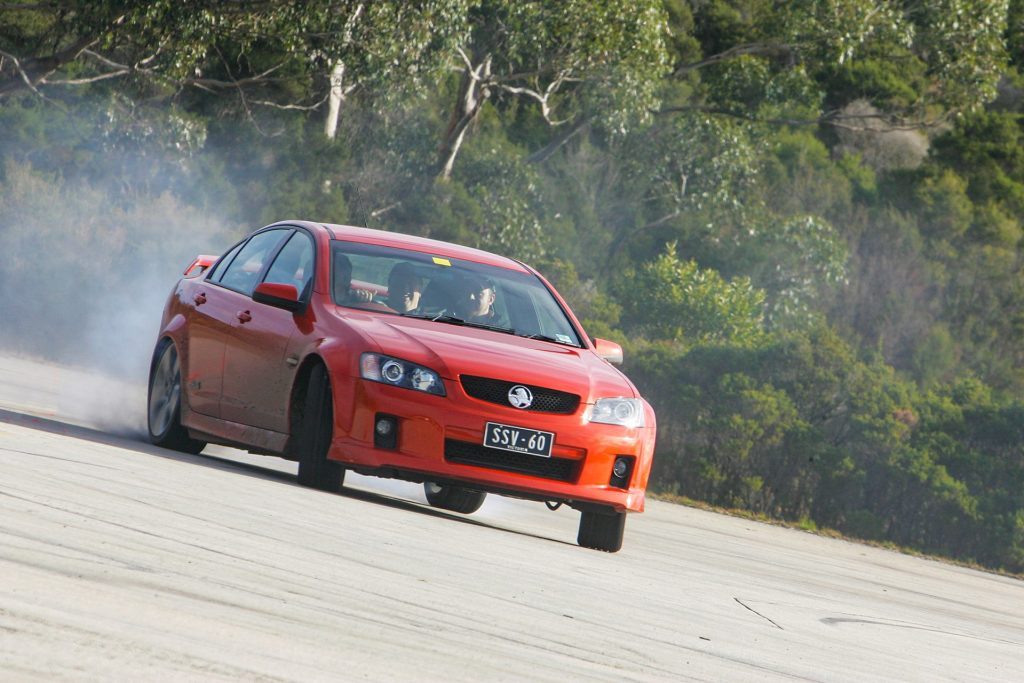
But from most other angles, those fenders speak of the SS V’s massive performance potential. And there’s no better way to describe it. All L98 VE’s are capable of obliterating the 6.0-second 0-100km/h mark, and almost as comfortably shredding the 14.0s 400-metre barrier. The combination of 270kW (+10kW on L76), 530Nm (+20Nm), and either the carryover Tremec T-56 manual six-speed, or new GM 6L80 six-speed auto, is devastatingly fast.
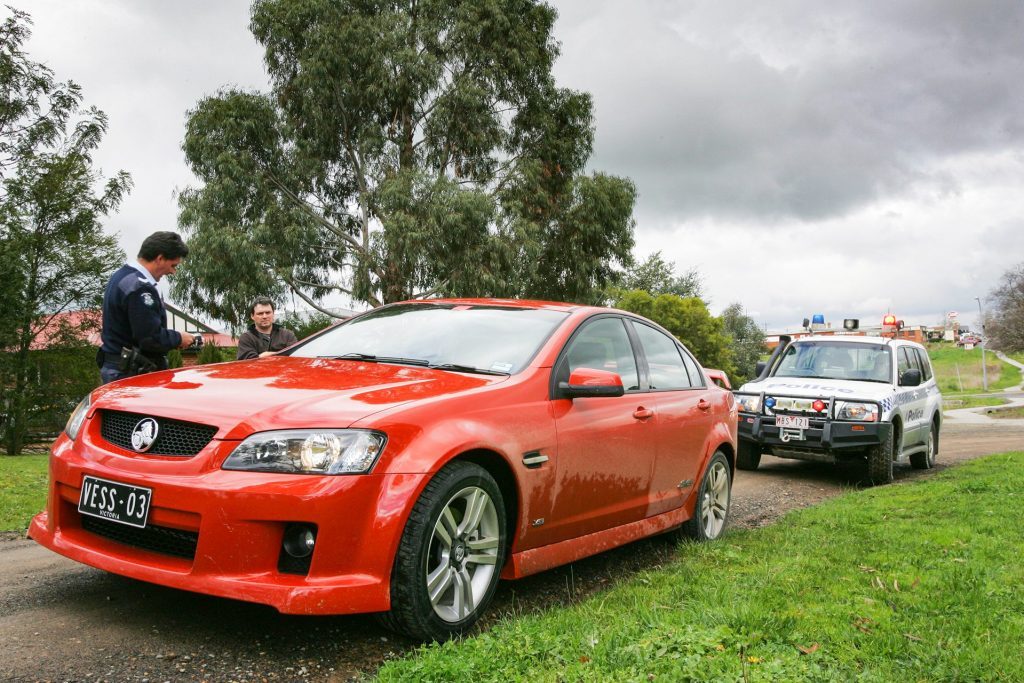
It’s not just the end result, but the way it’s so easy and repeatable. You see, for all VE’s spending on crucial big-bucks componentry, it’s the detail calibration, the fine-tuning that turns SS V into a great driver’s car with the likes of Calais V and SS snapping at its heels. It’s most obvious in the throttle response, which is instantaneous without being overwhelming. The SS V leaps forward the moment the loud pedal is pressed; it is almost alive underneath your foot. The solidity of urge is fantastic. And it just seems to be available anywhere from idle to redline. All this is underscored by a luscious exhaust burble from the new high-flow exhausts, two-and-a-quarter-inch pipes, and quad outlets, which becomes more and more menacing the further the tacho needle climbs. Crucially though, this is the main noise you hear, otherwise the VE is a startlingly quiet and refined car.
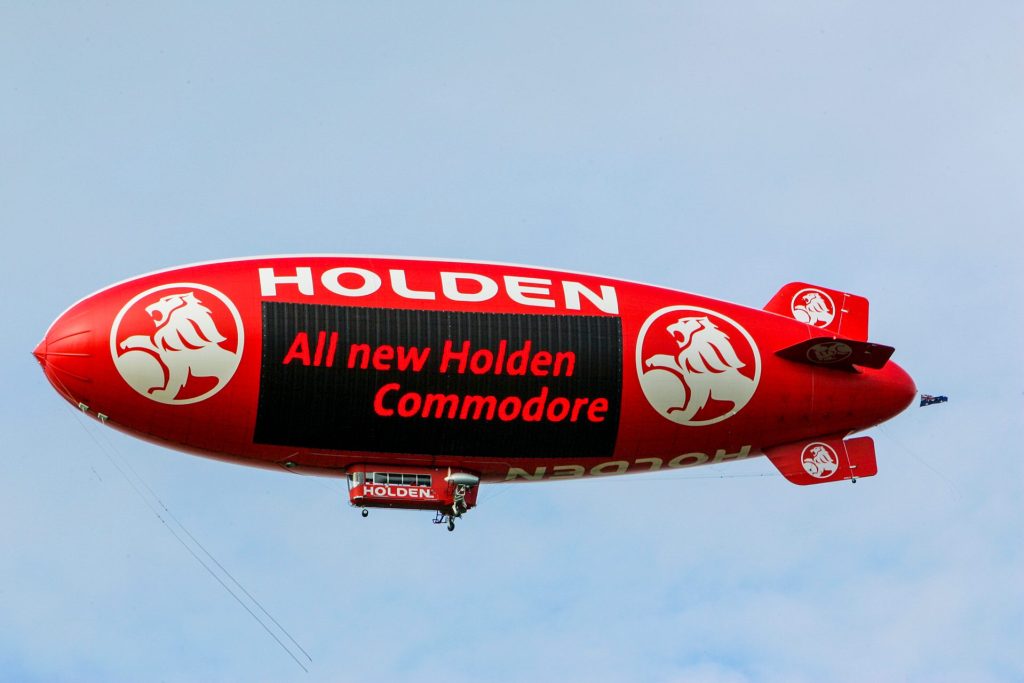
No surprise that the veteran Tremec cannot provide the same intimacy as some other parts. But with shorter ratios, upgraded synchromesh, and reduced shift and clutch-pedal travel, it is undoubtedly the best version of this ’box ever used in a Holden. Matched to this engine, it is a bit ‘set and forget’. First to start, third to carve, sixth to cruise. Easy.
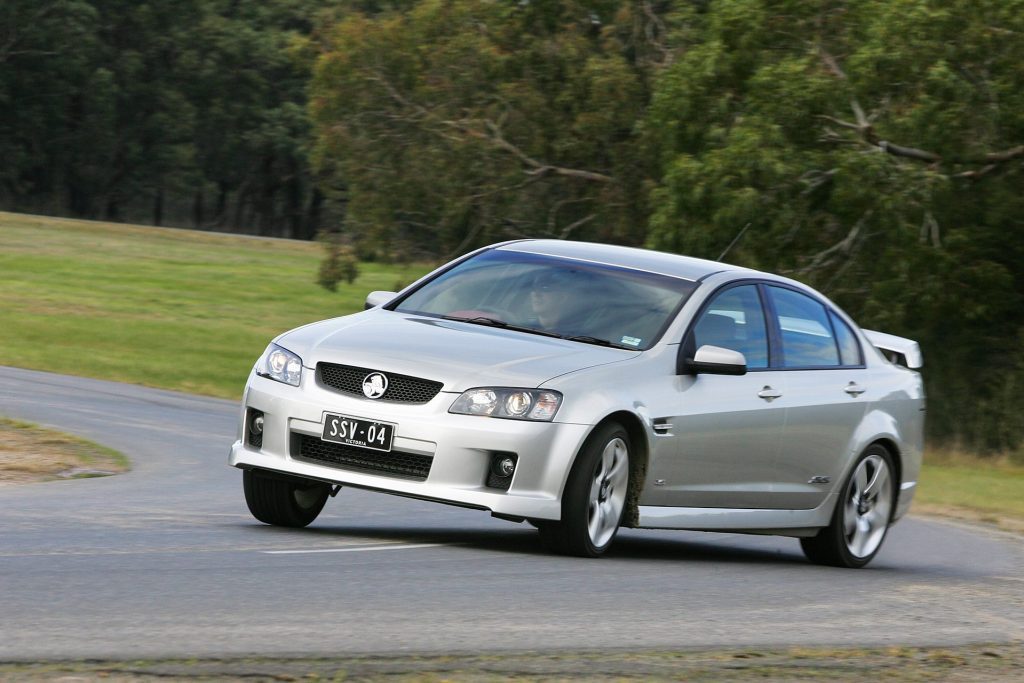
Then there’s the new six-speed auto. Optional on SS and SS V, standard on the Calais V8 models, GM’s 6L80E is undoubtedly a quantum leap over the old 4L65E four-speed, yet still not at the same level of excellence as the ZF six-speed employed by Ford. In standard mode it’s smooth, quite perceptive, and undoubtedly well engineered. Shift into ‘sports’ mode, and its character become noticeably more aggressive, but still without the adaptive brilliance of the ZF. A blast down the classic Chum Creek Road produced an unpredictable response. Sometimes the 6L80E would hold a gear, sometimes drop a gear to support braking, sometimes drop two to assist acceleration out of tight corners. It was wet, so perhaps the throttle and brake uses weren’t as definitive as in the dry, and therefore harder to read.
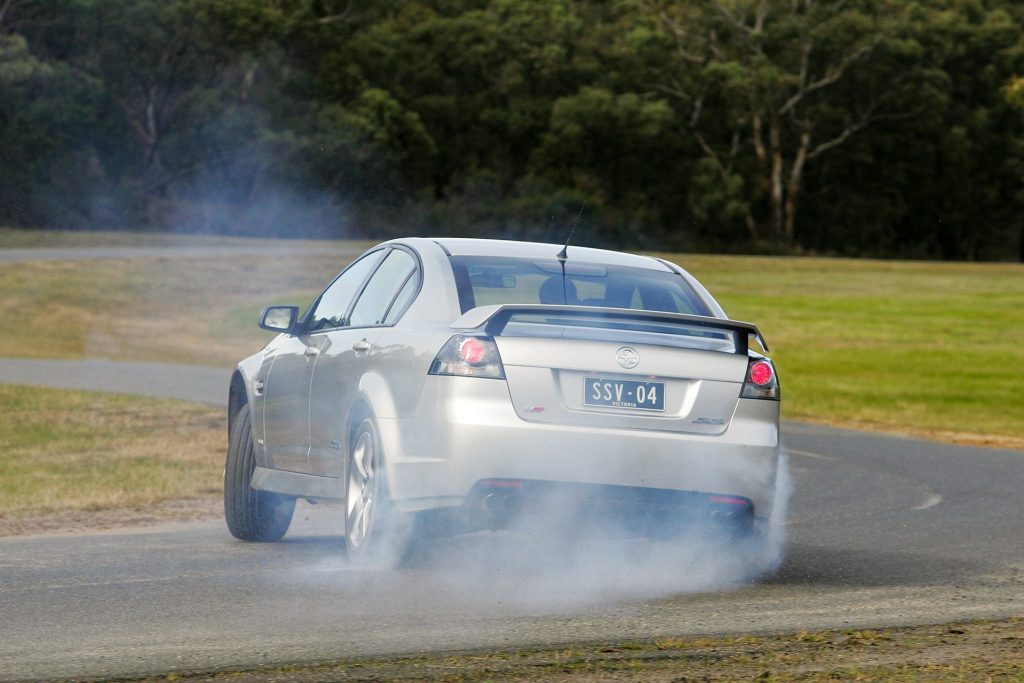
To end any indecision, there is also the ‘Active Select’ sequential manual mode – forward to go down, back to go up, thankfully. But while the response time is quick, the actual feel of the shift lacks any mechanical connection. Again, advantage ZF, but the gap has closed markedly.
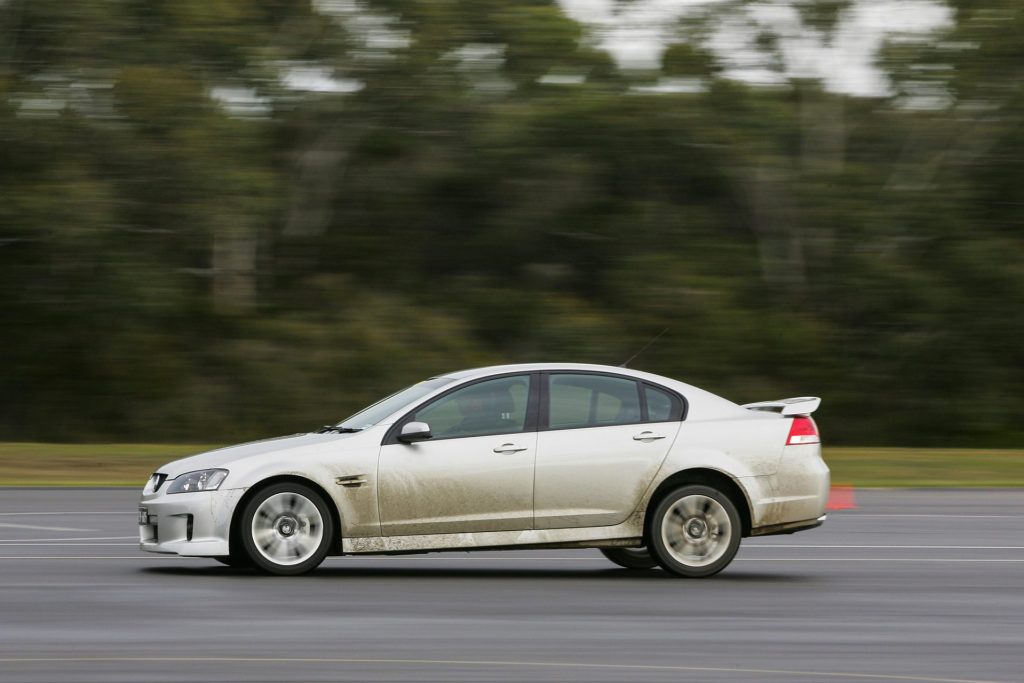
The beauty of all this is that the drivetrain is just the entrée, because the old VT-VZ Opel-sourced chassis has now gone the way of the Dodo. Holden’s new specification reads like an attempt to redress every wrong with the old car. Start with much more wheelbase and track (but only a minimal increase in overall length), add in 50:50 weight distribution, an almost 50 per cent stronger body, a lower centre of gravity, move the rack-and-pinion steering rack forward of the front-axle line, bring the MacPherson strut front suspension into the 21st Century, and develop in-house a compact multilink rear-end to replace the old trailing-arm set-up. This is more than a generational step: it’s a quantum leap. Every aspect of the dynamic experience is improved. SS V is so much easier to drive briskly than the old VZ SS over any challenging stretch of bitumen, it’s not funny: it’s bloody hilarious.
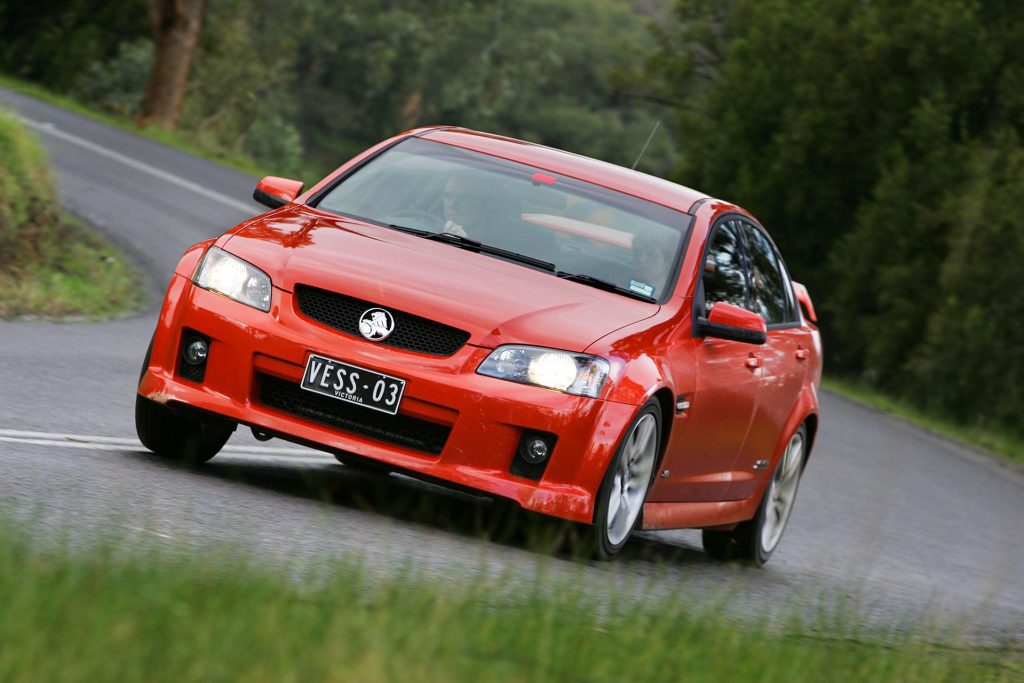
And in varying degrees, this thoroughbred feel is present right through the range, all the way down to the fleet-model Omega, with its 16-inch wheels (steel in Australia, alloy in NZ), softer suspension settings, base 180kW Alloytec V6, and four-speed auto. Every model is more than 100kg heavier than its VZ equivalent, and yet they still feel lighter on their feet, shrinking as speeds rise.
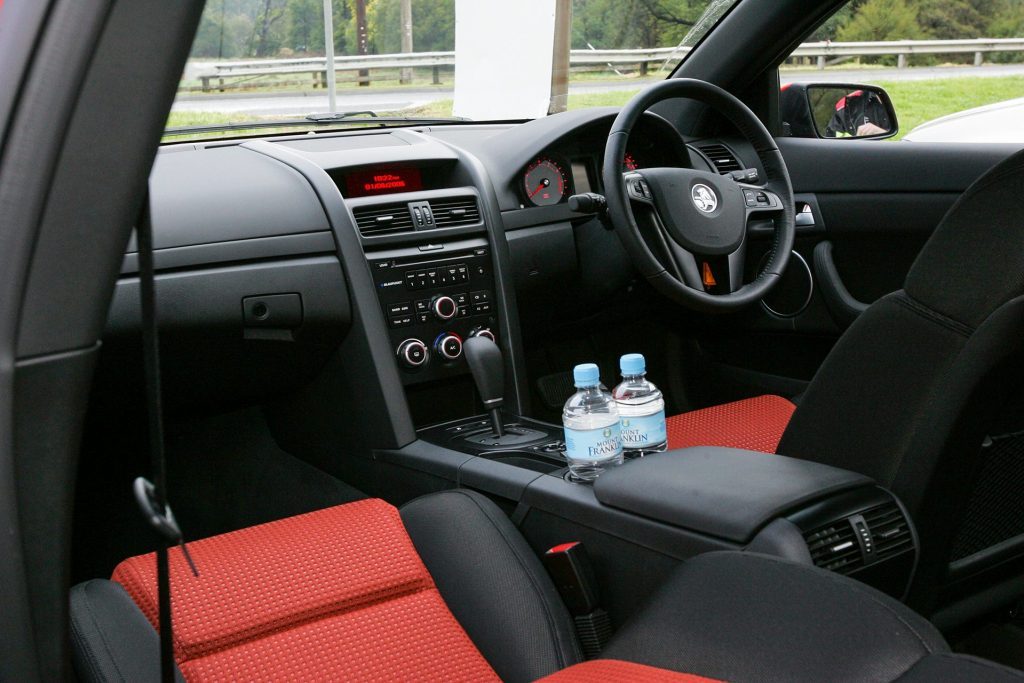
But the SS V is where this talent is supplied in concentrate. Almost everything you want is there in abundance, starting with communication. Through the fingers, through the bum, through the confident and predictable way the body rolls and quickly settles entering a corner. There’s no slumping onto the outside front wheel, no waiting for the back-end to break away unpredictably, no vagueness from the steering that previously wandered from pin-sharp at turn-in to vague, and then to heavy and lumpy. Now the SS V steers lightly and accurately into the corners, weighs up beautifully as loads increase, and stays predictably with you all the way through. All the while the four corners of the car are gripping, working, and talking. Mix in that awesome throttle response, and this car not only sticks in bends, it slingshots between them.
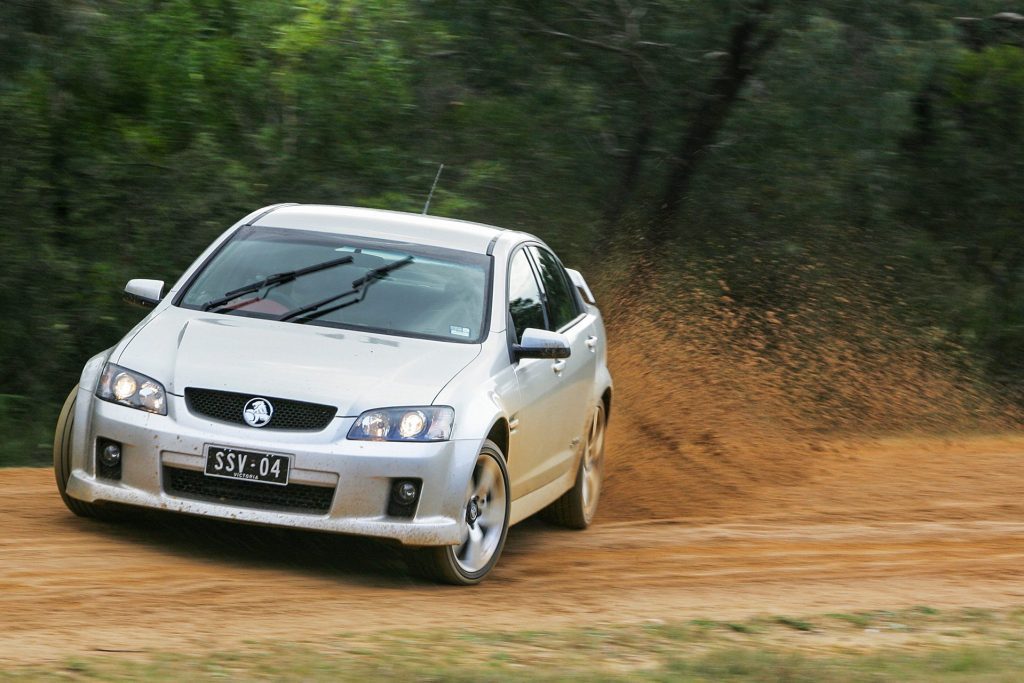
It builds confidence to the point that you do start pushing harder, elect to switch off the unobtrusive Bosch ESP, and start purposely experimenting beyond the limits of adhesion. And the response is still brilliant. You can drift the SS V like a pro, so predictable is it in its reactions. In the hands of someone who really knows what they are doing, the results are truly spectacular, as Holden development engineer, Rob Trubiani, has demonstrated on these pages for us. Riding with Trubiani and his colleagues simply reinforces what you’ve already learned about SS V, for they just magnify its abilities blindingly. A ‘Scandi flick’ on slick dirt followed by a perfect gravel-spraying arc around a hairpin is impressive enough, but what about a big heave on the steering wheel at more than 200km/h in the top lane of Holden’s Lang Lang’s speed bowl? It’s all over and back under control before you even consider reviewing your life insurance. And by the way, if you want to flatten the SS V or any V8 up there on the banking, you’ll find them speed-limited at 250km/h, but still feeling like there’s plenty in reserve.
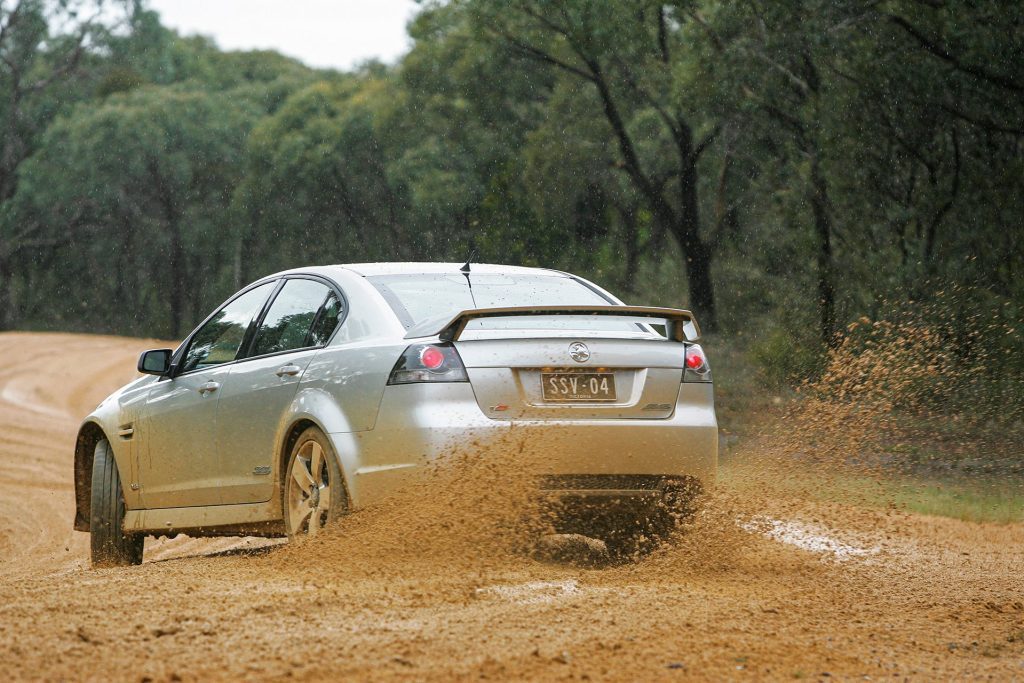
So love at first drive? No doubt – but not everything is above and beyond criticism. The larger, new brakes, while strong and resistant to fade, do not have the same intimate, communicative feel that many of VE’s other driver-car connections boast. And none of the performance cars have a particularly alluring interior. The instrument meters are difficult to read, and the SS V’s digital battery and oil temperature gauges at the top of the centre stack look like afterthoughts. Its exclusive sports front seats also seem too high, even on the lowest settings. Still, the flat-bottomed steering wheel, with its roller controls mounted in the spokes, is trick, while the 6.5-inch media screen and air-conditioning controls look classy. Not sure about the handbrake though; it’s OK when off and integrated into the console, but sticks out oddly when engaged.
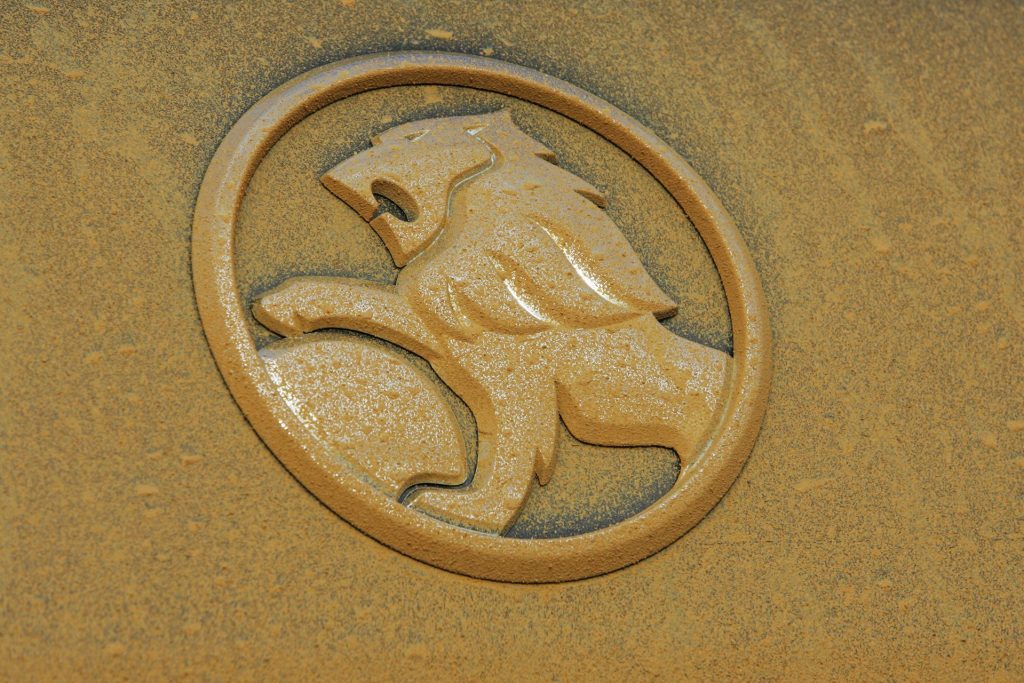
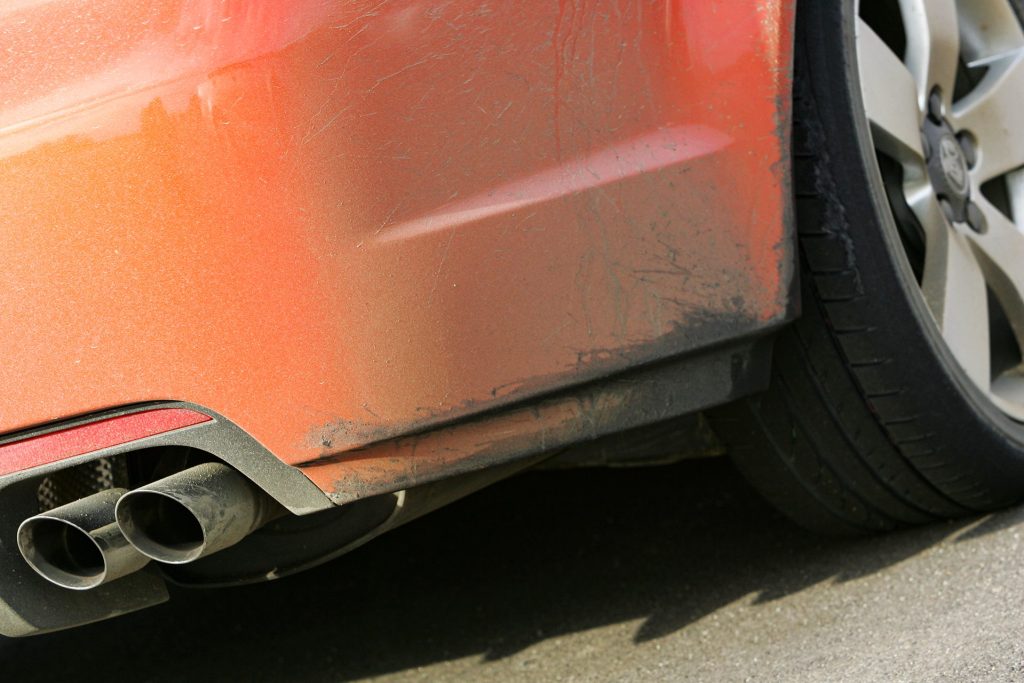

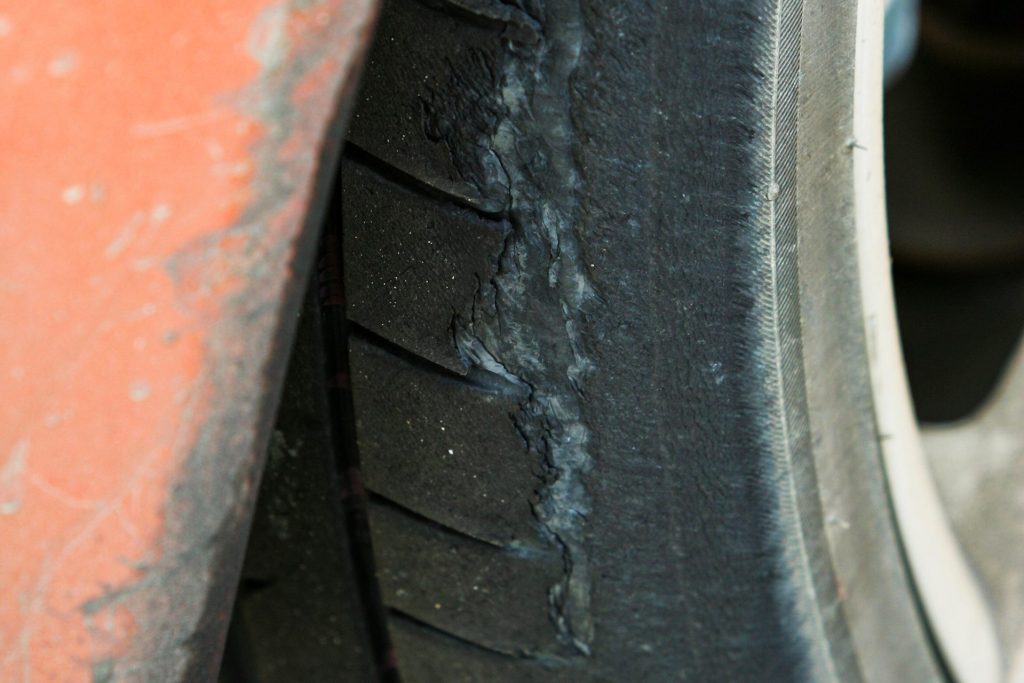
The SS – remembering it essentially replaces the old SV8 – is now pretty low-rent and straightforward inside. It’s almost indistinguishable from the SV6, and that applies to the outside look as well.
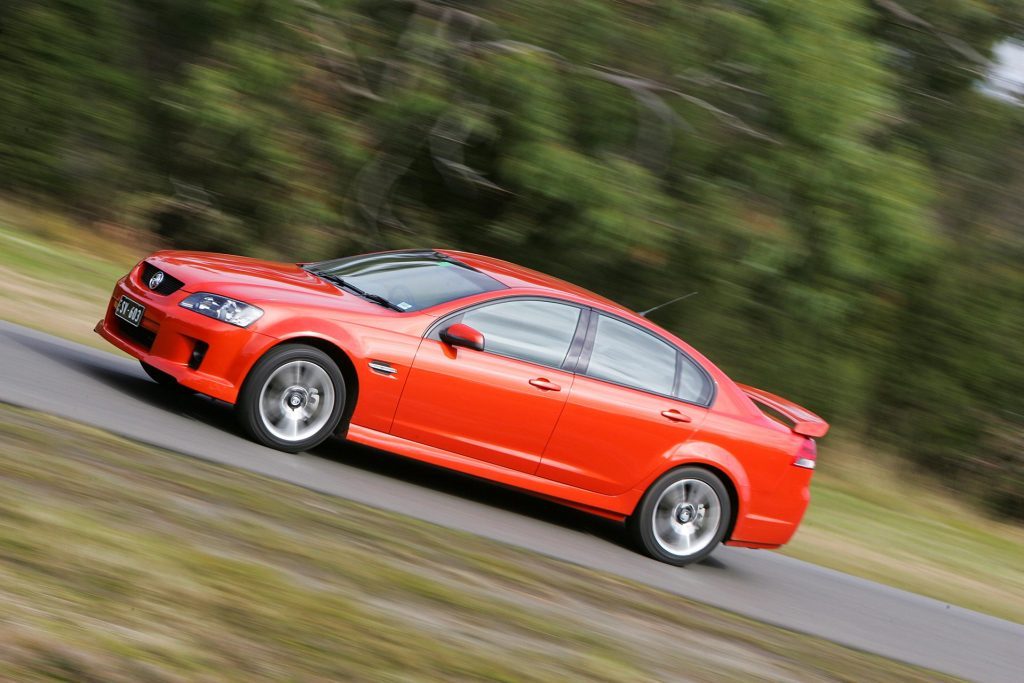
But the driving undoubtedly separates them. Where the SS is slightly more compliant and slightly less decisive than SS V, the SV6 retains the chassis magic but loses the drivetrain delights. Giving up two cylinders, 2.1 litres, 75kW, and 190Nm will do that. There is no doubt the High Output-version Alloytec is a better engine than its predecessor, benefiting from a five-kilowatt power hike and 10Nm torque increase delivered across a flatter curve. Primarily, it’s more liveable because the tauter, tighter body means the tendency of the old car to beam its engine vibration back into the cockpit is eliminated. But the Alloytec still doesn’t fire the soul as a great six can – the way Falcon’s exceptional Barra 190 4.0 litre straight does, for instance. It’s only a gut feel until they go back to back, but the SV6 doesn’t feel like it will find the XR6 an easy kill.
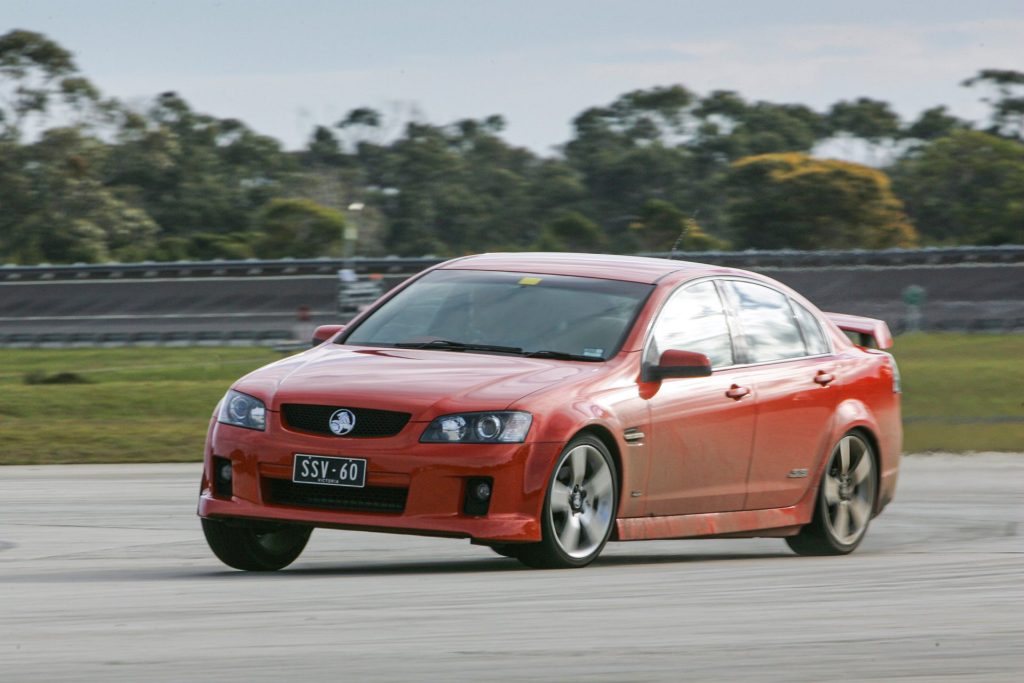
Unfortunately, the Alloytec and SV6 combo is dulled further by the rubbery six-speed manual Aisin manual AY6 gearbox, which dislikes attempts at quick shifting. The GM 5L40E five-speed auto is the go here, particularly as the Active Select mode has been shifted from steering-wheel paddles to a shift lever.
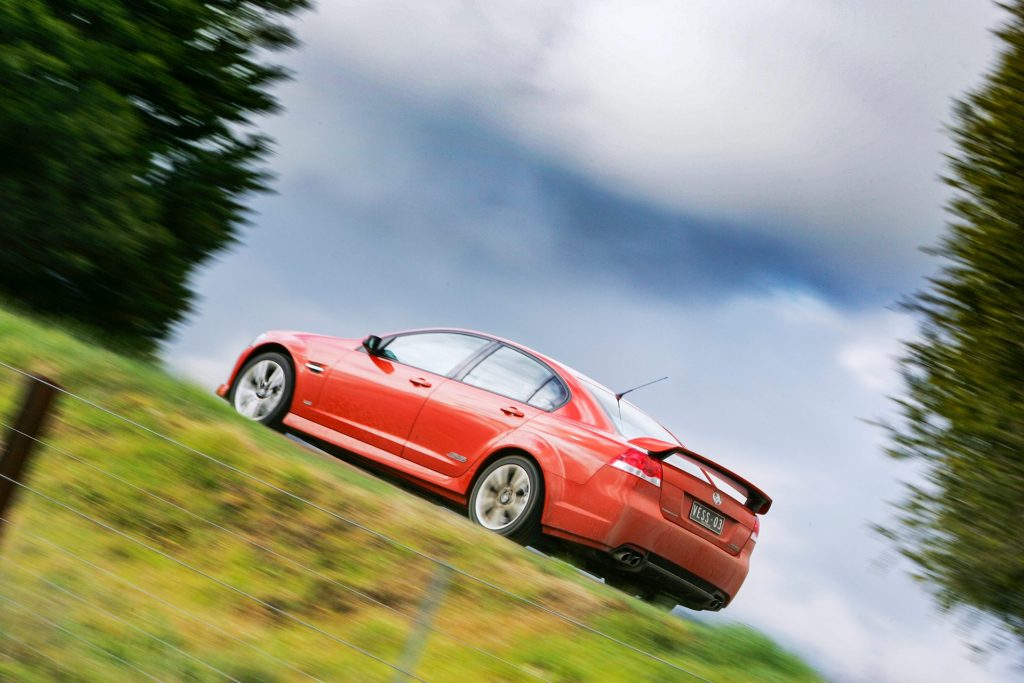
Don’t make the mistake of assuming the SV6 is a bad car: it is not. It just pales in comparison to the completeness of the V8s, and in particular the SS V. It can be punted hard and effectively; it just can’t provide the magical, complete experience that its bigger, bolder brother does.
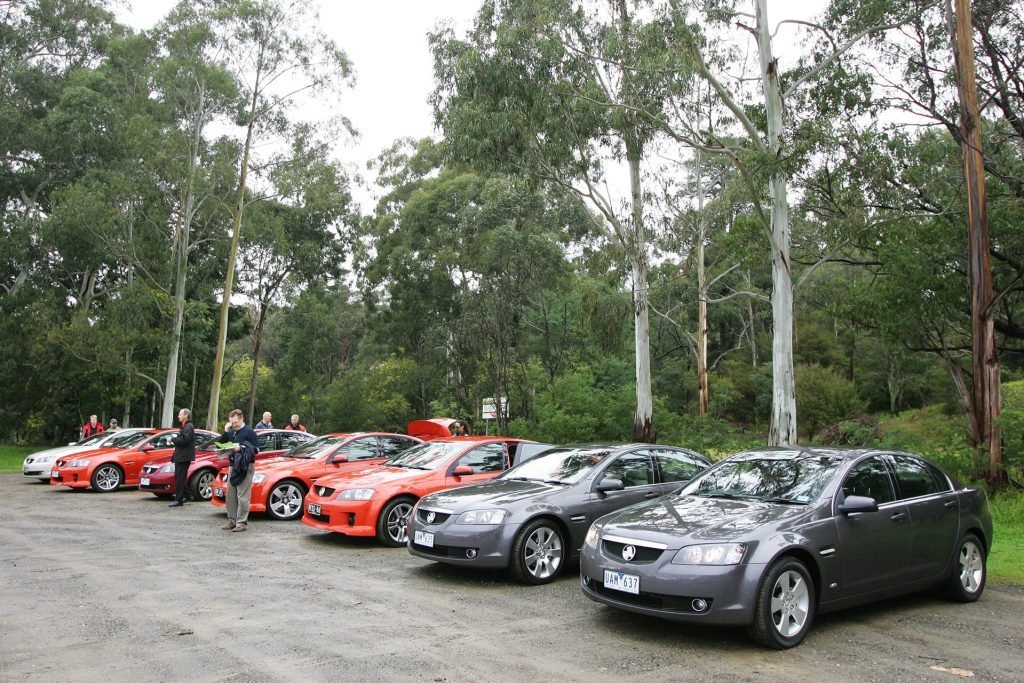
So, despite the price of crude, the skinny spare tyre, the lack of a split-fold rear seat; despite all the bloody negatives and knocking, there is no doubting that Holden has done an exceptional job with VE. Just a few minutes behind the wheel will convince you it’s in the driving. The wonderful bloody driving.
| Model | Holden Commodore SS V |
| Price | $66,690 |
| Engine | 5967cc, V8 |
| Power/Torque | 270kW/530Nm |
| Drivetrain | 6-speed manual, RWD |
| 0-100km/h | 5.60sec (claimed) |
| Stability systems | ABS, ESP, TC, EBD, EBA |
| Luggage Capacity | 496L |
| Weight | 1790kg (claimed) |
This article was first published in the September 2006 issue of NZ Autocar Magazine.
Got a past review you’d like to see posted online?
Our digital archives go back to the year 2000 and we have tested the majority of the new cars released to the New Zealand market during that time.
Let us know which of our historic reviews you’d like to see by submitting the form below.


